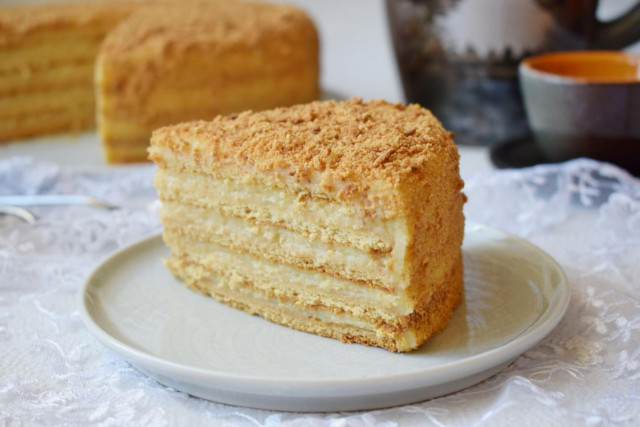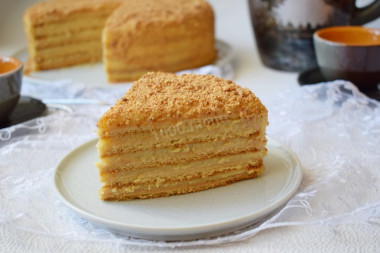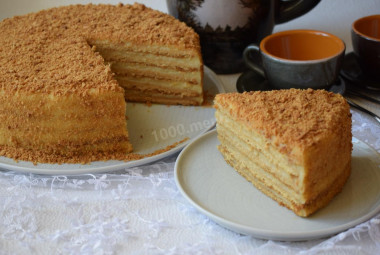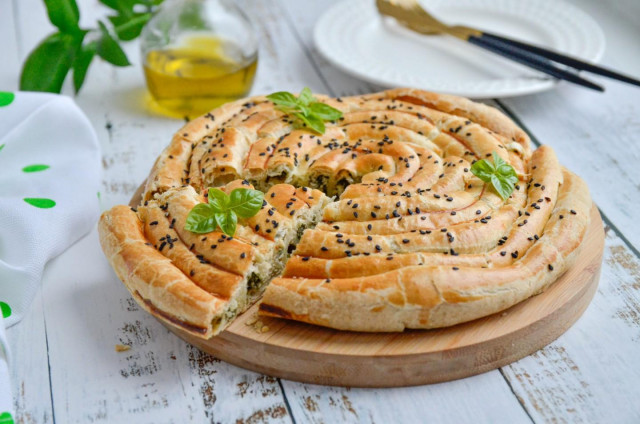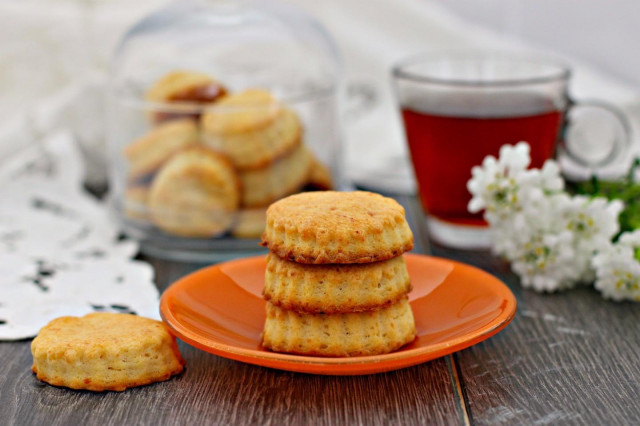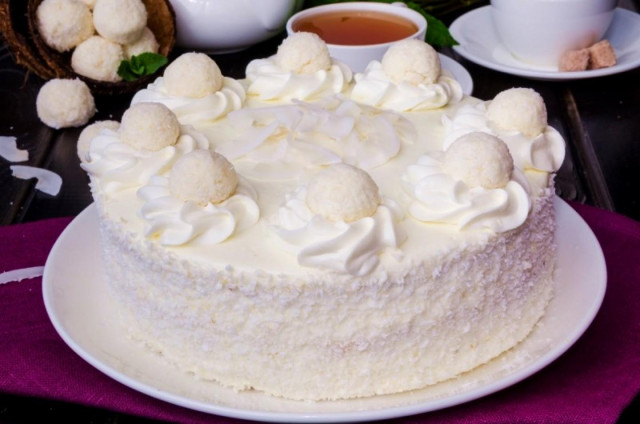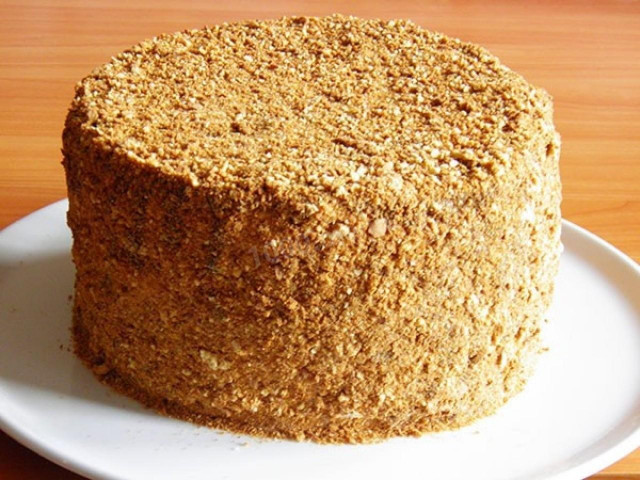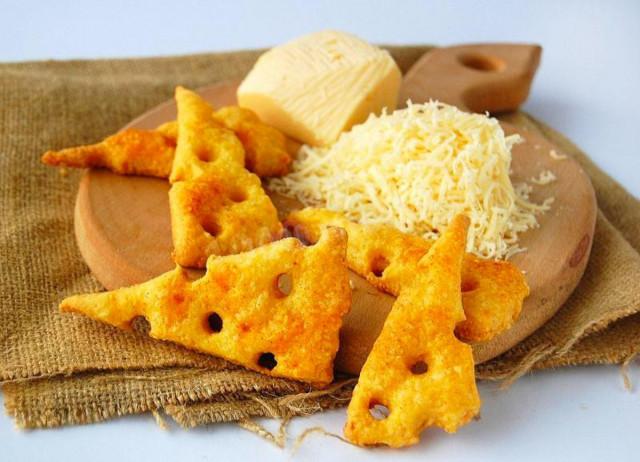Composition / ingredients
Step-by-step cooking
Step 1:
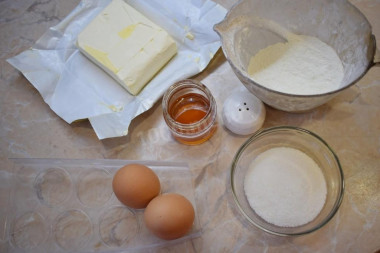
How to make a honey cake with custard? To prepare honey cakes, prepare everything you need. Use the highest grade flour and sift it through a sieve to saturate it with oxygen. If the honey is candied, then it can be warmed up a little in the microwave.
Step 2:

Put the butter in a spacious non-stick saucepan and put it on the fire. Melt it, but do not bring it to a boil. Remove the pan with melted butter from the heat and add honey to it.
Step 3:
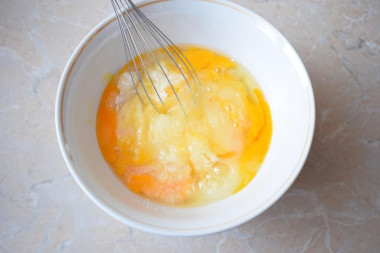
Mix eggs and sugar separately. It is not necessary to whip. Just shake it with a whisk.
Step 4:
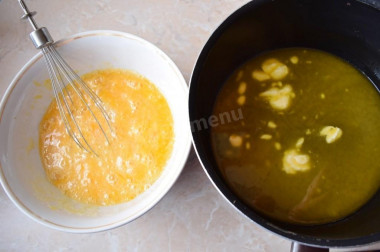
Put the egg mass into the warm oil and mix everything well. If injected into hot oil, the protein in the egg may curdle. Return the pan to the heat and bring everything together to a boil, stirring constantly.
Step 5:
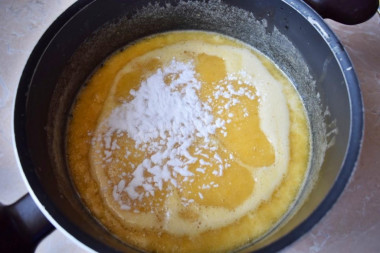
Then remove the pan from the heat and immediately add the soda. Mix it into the dough. In this case, the soda will react with honey. The mass will begin to foam and increase in volume. Leave the honey mass to cool down to a warm state.
Step 6:

Gradually add all the flour to the cooled mass and knead the dough. It is not necessary to add extra flour, otherwise the dough will be clogged with it and the finished products will be hard and rough. Freshly made dough will stick to your hands a little. That's how it should be. Wrap the dough in plastic wrap and put it in the refrigerator for 1 hour.
Step 7:
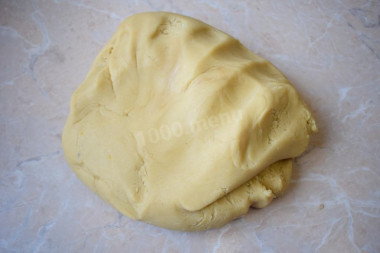
After cooling, the dough will stop sticking to your hands and it will be convenient and pleasant to work with.
Step 8:

Divide the dough into 6-8 pieces. Roll out each piece into a layer and cut out a circle of the required size. The number of pieces depends on what diameter the cakes will be and how thick they will be rolled out. I rolled them out thinly in diameter 22 cm. Prick the cake with a fork over the entire surface. Why prick with a fork? This is necessary so that when baking the dough does not rise in bubbles.
Step 9:

Bake the cakes in the oven, preheated to 180 degrees, for 4-5 minutes each. Be guided by your oven. Cool the finished cakes.
Step 10:
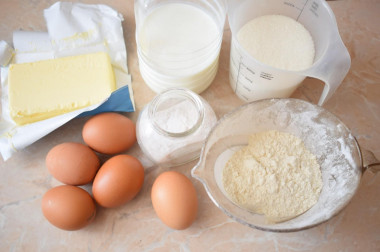
To prepare the custard, prepare the necessary ingredients.
Step 11:

Combine milk with sugar in a non-stick saucepan, put on fire and bring to a boil, stirring so that the sugar melts.
Step 12:
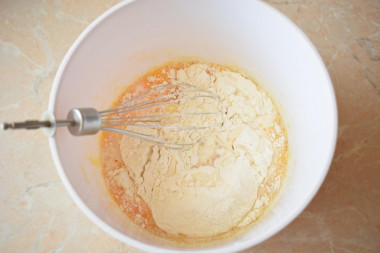
Separately combine eggs, flour, a pinch of vanilla and a little (70-100 ml) milk from the total amount. Mix everything with a whisk so that the flour spreads over the mass, then connect the mixer. The mass should become homogeneous, without lumps of flour.
Step 13:

Stirring the egg mass, gradually introduce boiling milk into it.
Step 14:

Then return everything together to the fire and, over low heat, with constant stirring, bring the cream to a thickness.
Step 15:
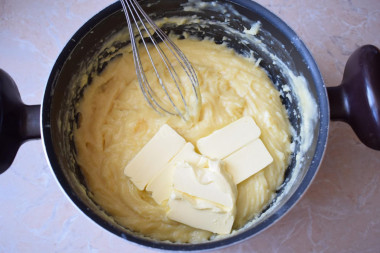
Remove the thickened cream from the heat and add butter to it. It will immediately begin to melt. Mix it with a mixer into the cream. Cover the finished cream with a lid or cling film and cool completely.
Step 16:

Smear the very first cake from the bottom with a little cream so that it sticks to the plate. Otherwise, he will slide on it. Lubricate the cakes with cream and gradually assemble the cake. Leave one cake to sprinkle the finished cake.
Step 17:

Top and sides of the cake, also, smear with cream. Put the cake in the refrigerator to soak it. It is advisable to cover it so that all the moisture does not erode, but goes into the cake and impregnates the cakes. I usually cover such a cake with the lid of the cake box. The impregnation will take from 5-6 hours. You can leave it overnight.
Step 18:

Grind the delayed cake into crumbs and sprinkle the cake on all sides.
Step 19:

Honey custard cake is ready!
Step 20:

Have a nice tea party!
Be prepared for the fact that flour may need more or less than indicated in the recipe. Focus not on the amount of flour, but on the desired consistency of the dough. To avoid mistakes, read about flour and its properties!
Keep in mind that everyone's ovens are different. The temperature and cooking time may differ from those specified in the recipe. To make any baked dish successful, use useful information about the features of ovens !
Since the degree of salinity, sweetness, bitterness, sharpness, acid, burning is individual for everyone, always add spices, spices and seasonings, focusing on your taste! If you put some of the seasonings for the first time, then keep in mind that there are spices that it is especially important not to shift (for example, chili pepper).
Caloric content of the products possible in the composition of the dish
- Whole cow's milk - 68 kcal/100g
- Milk 3.5% fat content - 64 kcal/100g
- Milk 3.2% fat content - 60 kcal/100g
- Milk 1.5% fat content - 47 kcal/100g
- Concentrated milk 7.5% fat content - 140 kcal/100g
- Milk 2.5% fat content - 54 kcal/100g
- Chicken egg - 157 kcal/100g
- Egg white - 45 kcal/100g
- Egg powder - 542 kcal/100g
- Egg yolk - 352 kcal/100g
- Ostrich egg - 118 kcal/100g
- Honey - 400 kcal/100g
- Whole durum wheat flour fortified - 333 kcal/100g
- Whole durum wheat flour, universal - 364 kcal/100g
- Flour krupchatka - 348 kcal/100g
- Flour - 325 kcal/100g
- Granulated sugar - 398 kcal/100g
- Sugar - 398 kcal/100g
- Butter 82% - 734 kcal/100g
- Amateur unsalted butter - 709 kcal/100g
- Unsalted peasant butter - 661 kcal/100g
- Peasant salted butter - 652 kcal/100g
- Melted butter - 869 kcal/100g
- Salt - 0 kcal/100g
- Vanillin - 288 kcal/100g
- Baking soda - 0 kcal/100g

